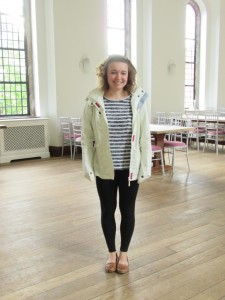You can tell that we have performances looming; our rehearsals are coming thick and fast, none more so than Saturday’s all-day session. These lengthier rehearsals are infinitely more useful than our customary two-and-a-half-hour weekly meetings, as they allow for more concentrated, more sustained working. You have time to develop the whole process – looking at notes through balancing chords, to shaping, dynamics, placing consonants, making sure vowel shapes are correct, unity of ensemble sound, time really to get beneath the skin of the music far more in longer rehearsal sessions; and over more pieces, too.
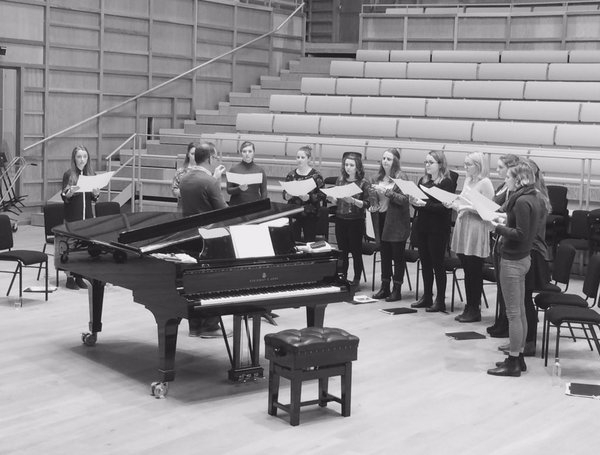 Saturday therefore allowed us to immerse ourselves in the repertoire for our looming performances, and showed us aspects of the programme that hadn’t been apparent before. A long look at Tartini’s Stabat Mater, for instance, ended with the Choir singing the whole piece through for the first time, and we discovered the piece has an emotional scale and drama far outweighing the scope of its slight appearance on the page. Moving between radiant, three-voice colours and the stark simplicity of plainsong in its setting of the agonising text reflecting on Christ’s Mother weeping at the foot of the Cross, and a yearning to share in Christ’s passion, the music demands sustained concentration in order to bring out the tone of the text as it unfolds.
Saturday therefore allowed us to immerse ourselves in the repertoire for our looming performances, and showed us aspects of the programme that hadn’t been apparent before. A long look at Tartini’s Stabat Mater, for instance, ended with the Choir singing the whole piece through for the first time, and we discovered the piece has an emotional scale and drama far outweighing the scope of its slight appearance on the page. Moving between radiant, three-voice colours and the stark simplicity of plainsong in its setting of the agonising text reflecting on Christ’s Mother weeping at the foot of the Cross, and a yearning to share in Christ’s passion, the music demands sustained concentration in order to bring out the tone of the text as it unfolds.
We also pieced together, for the first time in its entirety, Veljo Tormis’ Spring Sketches, a beautiful set of short songs evoking various nature-scenes – the ebb and flow of the sea, apple-blossom, the colours of the evening sky, the warmth of late spring and the echoing cuckoo-call. There are some ravishing chords at various places in the suite, which need careful balancing if the colours are to come forth. Assistant conductor, third-year Joe Prescott, also took the Choir through pieces by Mozart, Brahms and Cornysh’s Ah, Robin.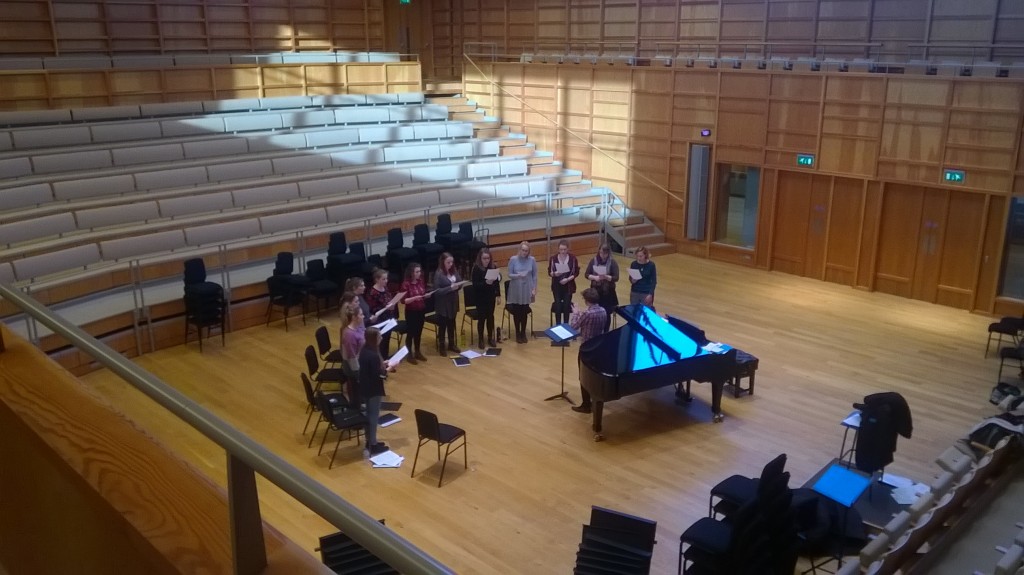
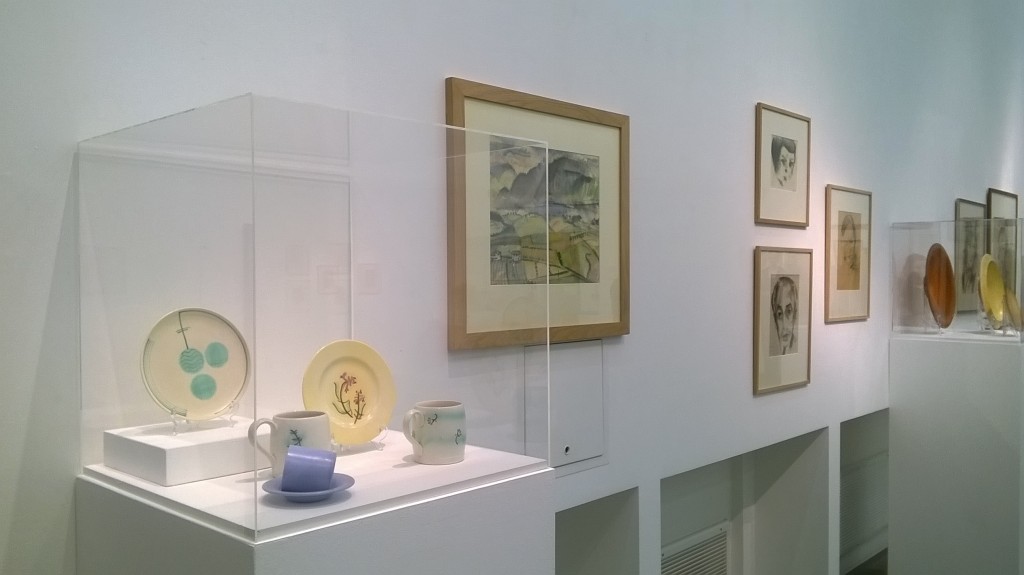 Mid-way through the afternoon, we decamped to Studio 3 Gallery, the venue for our first concert on Friday 12 February, in which the Choir will perform amidst the backdrop to the gallery’s new exhibition, After the Break, which exams the work of two artists, Grete Marks and Kurt Schwitters, who both fled Nazi Germany and came to settle in England. There’s something highly atmospheric about performing amidst visual art – the rapport between the two media means you experience the music differently in the context of the artwork, and your response to the artwork is different in the context of music.
Mid-way through the afternoon, we decamped to Studio 3 Gallery, the venue for our first concert on Friday 12 February, in which the Choir will perform amidst the backdrop to the gallery’s new exhibition, After the Break, which exams the work of two artists, Grete Marks and Kurt Schwitters, who both fled Nazi Germany and came to settle in England. There’s something highly atmospheric about performing amidst visual art – the rapport between the two media means you experience the music differently in the context of the artwork, and your response to the artwork is different in the context of music.
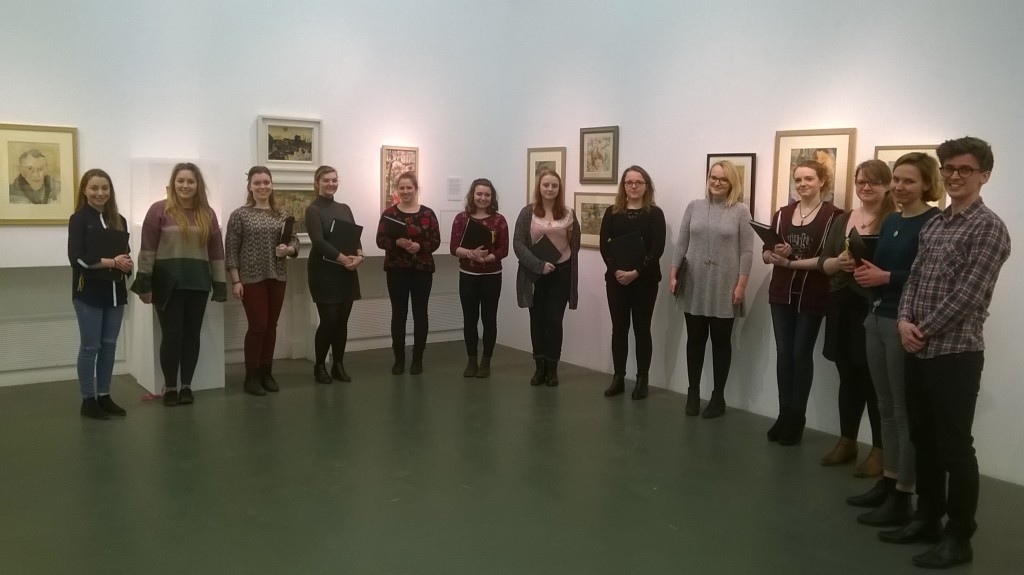
The Choir rehearsing in Studio 3 Gallery
We arranged ourselves in the corner of the gallery, and started to sing what will be the first piece in the programme, a Kyrie by Hildegard von Bingen. We reached the end of the first phrase – and stopped. The rich acoustic of the gallery had blossomed as that first phrase unravelled, lifting and filling the space, and there was a sense immediately that time had turned, travelling back over a thousand years.
 It was a remarkable moment.
It was a remarkable moment.
You could see on the faces of the singers that something had just occurred, something unexpected, something quire powerful. There was a pause, and then an excited buzz went around the room; this gig is Going To Work!
We spent the remainder of the afternoon running through the entire programme, from that skirling Kyrie and ending with the dancing Song of the Stars by Bob Chilcott. Clothed in the sonorous acoustic of Studio 3, the ensemble had a much more vivid, unified sound; and in fact we discovered that we need to tailor the louder sections somewhat, in order not to overwhelm the listener! But we can also go very much quieter in the softer passages, really draw the audience to us and make them listen.
 All in all, then, a good day’s work. And first-year Alice S’s cake-making skills were in evidence yet again – there was some pressure to live up to the excellence of her contribution to lunch after the success of her effort last term, and it seems she didn’t disappoint this time around either. We pick up again tomorrow night, in a steady build-up into both concerts this month, and at last the pieces are starting to bloom. Come and here them for yourselves…
All in all, then, a good day’s work. And first-year Alice S’s cake-making skills were in evidence yet again – there was some pressure to live up to the excellence of her contribution to lunch after the success of her effort last term, and it seems she didn’t disappoint this time around either. We pick up again tomorrow night, in a steady build-up into both concerts this month, and at last the pieces are starting to bloom. Come and here them for yourselves…

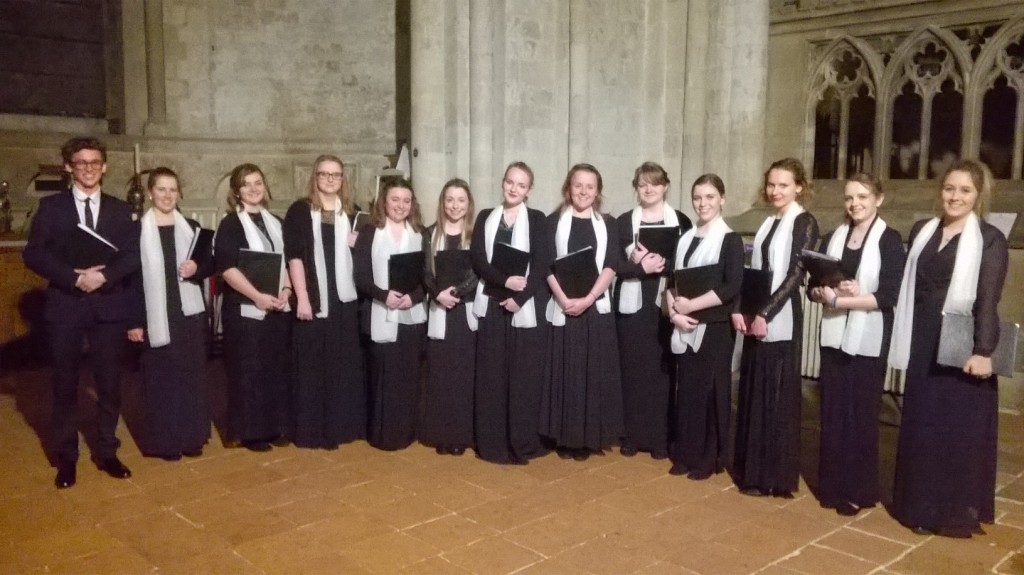
 Last night’s service, always a high-point of Kent’s cultural calendar, saw over a thousand people packing out Canterbury Cathedral, including the members of Minerva Voices, who performed several solo pieces as well as leading some ringing descants in the congregational hymns (which involved some serious planning over dinner betwtixt rehearsal and concert). The choir arrived in the Nave yesterday afternoon, to rehearse its repertoire, as well as to practice processing from the West Door down to the steps before the rood screen, and to get accustomed to singing in such a magnificent venue. Standing at the end of the Nave, you suddenly realise the volume of vaulted space that the Choir needs to fill with sound.
Last night’s service, always a high-point of Kent’s cultural calendar, saw over a thousand people packing out Canterbury Cathedral, including the members of Minerva Voices, who performed several solo pieces as well as leading some ringing descants in the congregational hymns (which involved some serious planning over dinner betwtixt rehearsal and concert). The choir arrived in the Nave yesterday afternoon, to rehearse its repertoire, as well as to practice processing from the West Door down to the steps before the rood screen, and to get accustomed to singing in such a magnificent venue. Standing at the end of the Nave, you suddenly realise the volume of vaulted space that the Choir needs to fill with sound.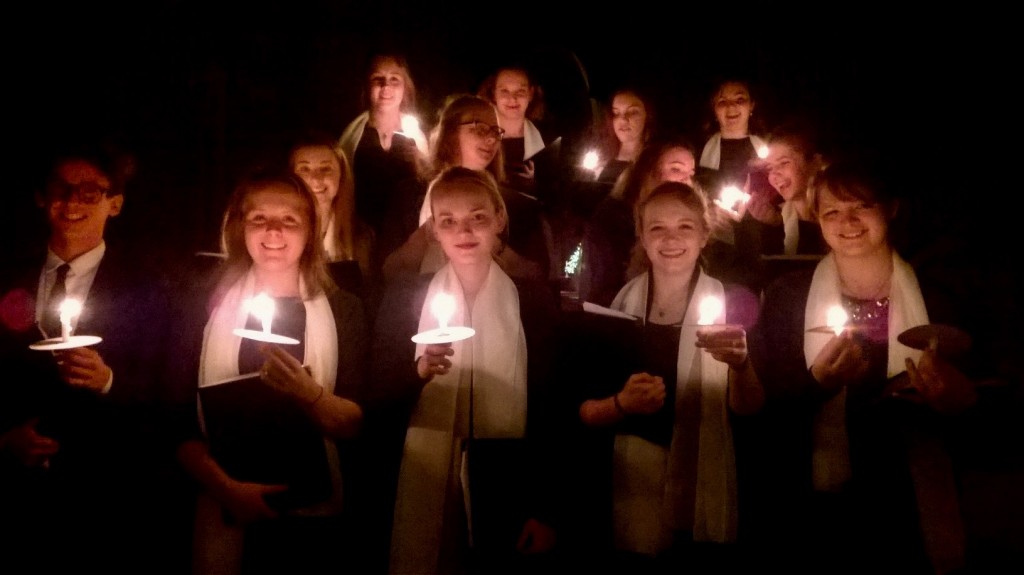 The service closes with a candlelit communal performance of Hark the Herald Angels Sing, and as the congregation departed, bearing their lit candles out into the night and into the mist-strewn city streets, you felt the reach of Christmas go with them. It’s a wonderful occasion, with so many of the University community coming together to hear anew the message of the season in words and music, to reflect on the tidings of the moment and to reach out to others. Now that really is the meaning of Christmas.
The service closes with a candlelit communal performance of Hark the Herald Angels Sing, and as the congregation departed, bearing their lit candles out into the night and into the mist-strewn city streets, you felt the reach of Christmas go with them. It’s a wonderful occasion, with so many of the University community coming together to hear anew the message of the season in words and music, to reflect on the tidings of the moment and to reach out to others. Now that really is the meaning of Christmas.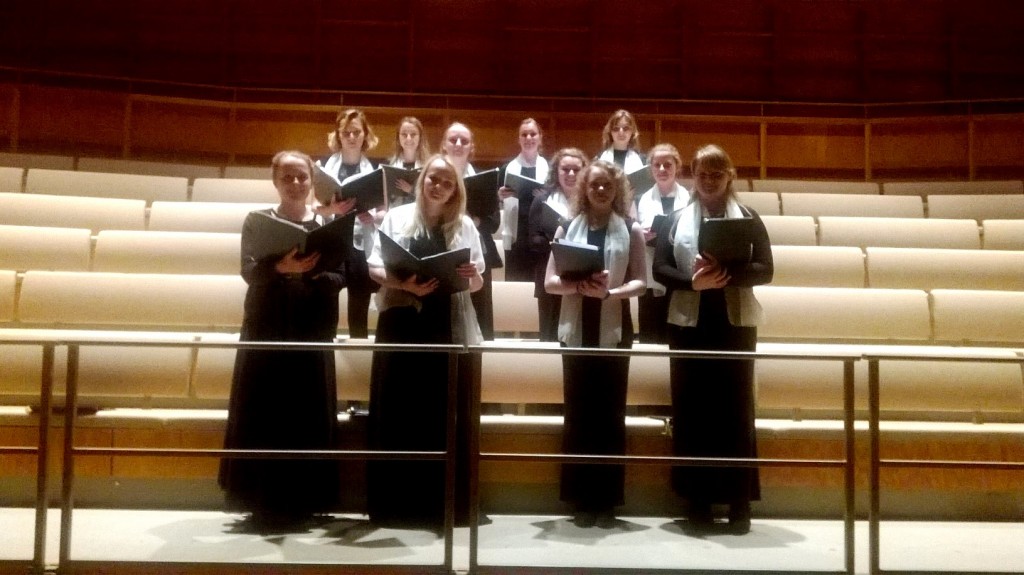
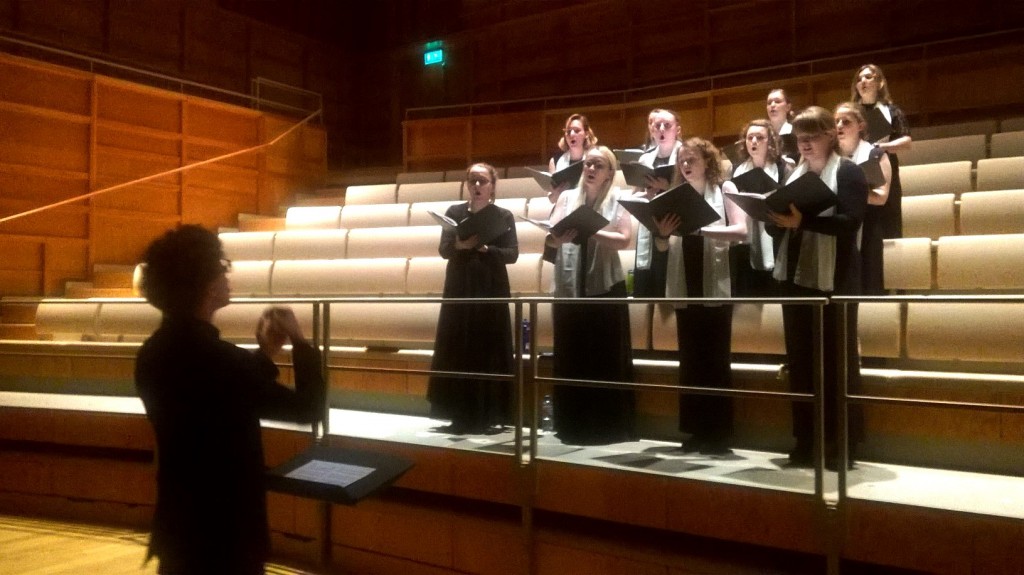
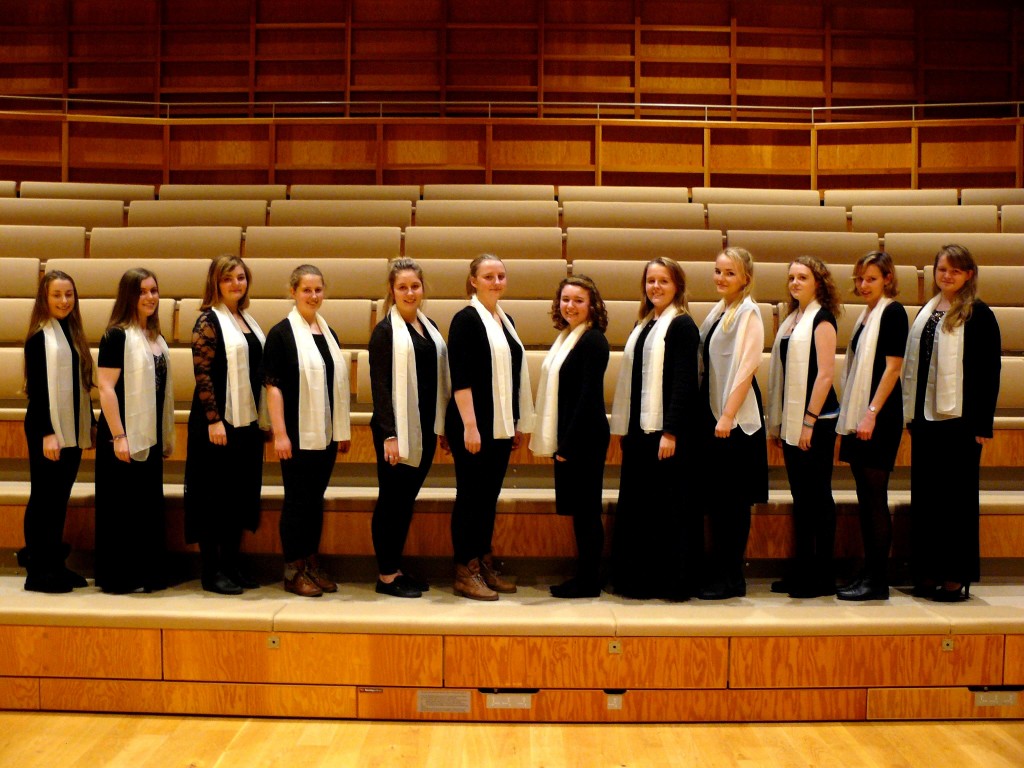 And all the weeks of nagging – by both myself and this year’s assistant conductor, Joe – finally began to yield results last night. The ensemble sound was more confident, the choir was beginning to find its feet and start to perform, rather than simply singing through the repertoire.
And all the weeks of nagging – by both myself and this year’s assistant conductor, Joe – finally began to yield results last night. The ensemble sound was more confident, the choir was beginning to find its feet and start to perform, rather than simply singing through the repertoire.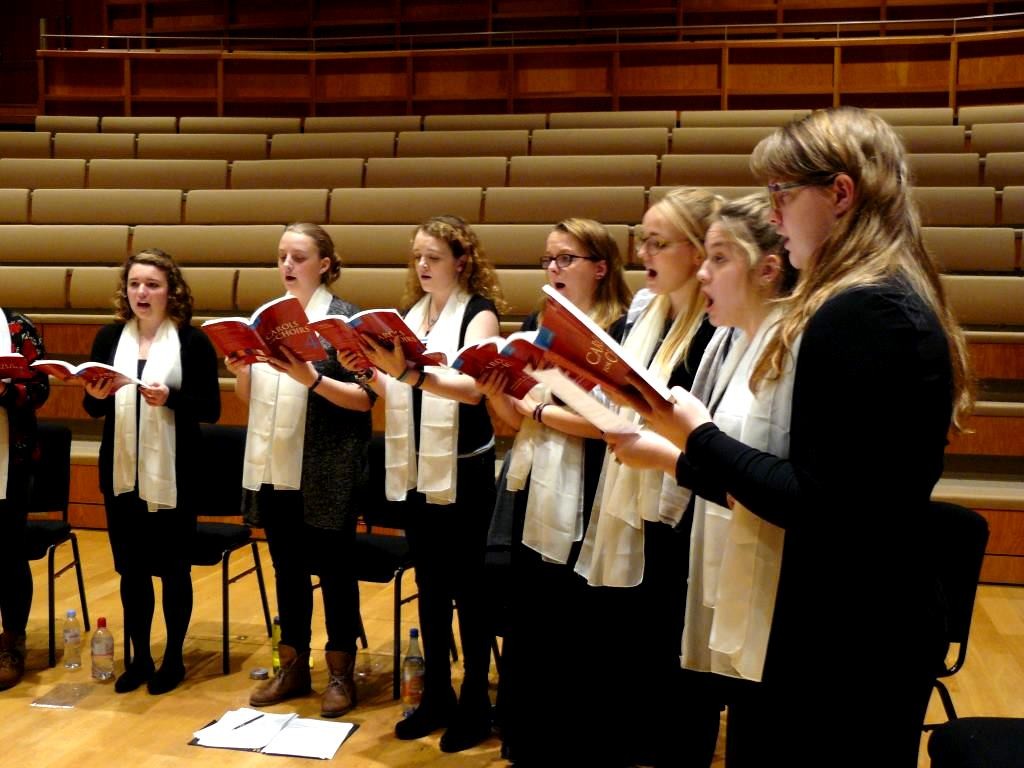 The other aspect to last night’s rehearsal was a first try-out of the choir’s concert outfits, to see if the colour and co-ordinating will work. This year, we’ve gone for the simple but stark contrast of black and cream, and last night we sang for most of the session in concert-dress; and it does make a difference. Not only do you need to sound like a choir, you need to feel like one; to stand and deliver in a manner that tells the audience that you know what you are doing, and that wins the listener’s trust even before you have sung a note. Standing like a choir last night also helped them sing like one too.
The other aspect to last night’s rehearsal was a first try-out of the choir’s concert outfits, to see if the colour and co-ordinating will work. This year, we’ve gone for the simple but stark contrast of black and cream, and last night we sang for most of the session in concert-dress; and it does make a difference. Not only do you need to sound like a choir, you need to feel like one; to stand and deliver in a manner that tells the audience that you know what you are doing, and that wins the listener’s trust even before you have sung a note. Standing like a choir last night also helped them sing like one too.

 How did you get into choral singing ?
How did you get into choral singing ? I enjoyed listening to Choral singing when I got the opportunity to, such as listening to King’s at Christmas or other events, but it was only really when I joined the University of Kent last year and I joined a full SATB choir that I fully was able to appreciate the music and get into it.
I enjoyed listening to Choral singing when I got the opportunity to, such as listening to King’s at Christmas or other events, but it was only really when I joined the University of Kent last year and I joined a full SATB choir that I fully was able to appreciate the music and get into it.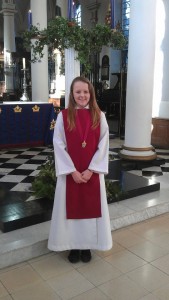 What’s your favourite piece ?
What’s your favourite piece ?
